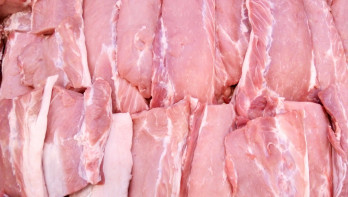Analysis Pigs & Pork
Pork meat export Brazil remains strong
The Brazilian pork meat export has once again increased in May. The strong result is the result of a successful market diversification. Lower imports from China are being compensated by success in other Asian markets.
Compared to May 2023, the export increased by 2.7%. In total, Brazil exported 103,300 tons of pork meat. According to Cepea, the statistical agency of the Brazilian government, the export volumes compared to the record month of April were lower (-7.4%). The value of the export decreased by 6.7% to 1.15 billion real (approximately €200 million) compared to April. Despite the larger export volumes, the value decreased by 7.5% compared to May 2023. Cepea attributes the weaker result to the fact that May had one less production day than April; 21 working days instead of 22.
This is a slightly weaker result than an earlier forecast by the Brazilian meat sector organization ABPA, although the results are not far apart. From a survey, the organization concluded that Brazil exported 104,400 tons of pork meat. The organization estimates that the export in the first five months of the year will reach 506,600 tons, an increase of 5.3%. The value of the export over this period decreased by 7.3% to €1.07 billion according to ABPA.
Chinese decline
According to ABPA, the export to the main export market, China, decreased by 37.6% in the first five months of the year. Brazil exported 111,400 tons of pork meat during that period. The weaker export is the result of increased domestic production in China. Other Asian markets compensate for the difference. For example, the Philippines imported 70,200 tons, an increase of 84.8% compared to the same period a year earlier. The export to Singapore increased to 32,300 tons, a rise of 11.2%. Meanwhile, the export to Japan increased by 92.8% to 27,400 tons.
The main exporting state was, as always, Santa Catarina. The state exported 280,500 tons of pork meat, an increase of 7.3% in the period from January to March. The second largest state showed a less favorable picture. Rio Grande do Sul clearly suffered from the floods in May and saw the export decrease by 4.1%. The export from Paraná also decreased. The export from that state decreased by 1.75% to 65,300 tons. The export from Mato Grosso increased by 46.3% to 14,800 tons. This surpasses the state of Mato Grosso do Sul, which exported 11,000 tons, an increase of 1.4%.




